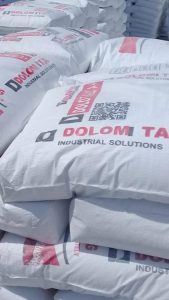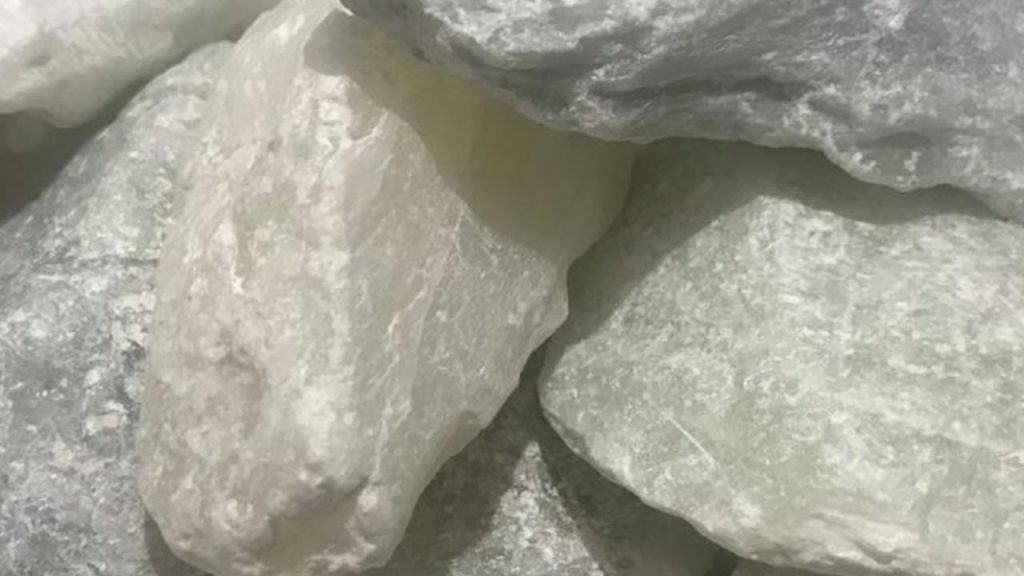
We supply a wide range of talc powder which is suitable for paints, rubber, insecticides, cosmetics, plastics, paper, ceramic and pharmaceutical industries. Please contact us to get the product that meets your requirements.
Talc is widely used in the ceramics industry in both bodies and glazes. In low-fire art-ware bodies, it imparts whiteness and increases thermal expansion to resist crazing. In stonewares, small percentages of talc are used to flux the body and therefore improve strength and vitrification. It is a source of MgO flux in high-temperature glazes (to control melting temperature). It is also employed as a matting agent in earthenware glazes and can be used to produce magnesia mattes at high temperatures.
Talc is used in many industries, including paper making, plastic, paint and coatings, rubber, food, electric cable, pharmaceuticals, cosmetics, and ceramics
Uses of Talc
Most people use products made from talc every day; however, they don’t realize that talc is in the product or the special role that it plays.
Talc in Plastics
It is mainly used as a filler. The platy shape of talc particles can increase the stiffness of products such as polypropylene, vinyl, polyethylene, nylon, and polyester. It can also increase the heat resistance of these products and reduce shrinkage. Where the plastic is extruded in the manufacturing process, talc’s very low hardness produces less abrasion on equipment than harder mineral fillers
Talc in Paint
Most paints are suspensions of mineral particles in a liquid. The liquid portion of the paint facilitates application, but after the liquid evaporates, the mineral particles remain on the wall. Talc is used as an extender and filler in paints. The platy shape of talc particles improves the suspension of solids in the can and helps the liquid paint adhere to a wall without sagging.
Powdered talc is a very bright white color. This makes talc an excellent filler in paint because it simultaneously serves to whiten and brighten the paint. Talc’s low hardness is valued because it causes less abrasion damage on spray nozzles and other equipment when paint is applied.
Talc in Paper
Most papers are made from a pulp of organic fibers. This pulp is made from wood, rags, and other organic materials. Finely ground mineral matter is added to the pulp to serve as a filler. When the pulp is rolled into thin sheets, the mineral matter fills spaces between the pulp fibers, resulting in a paper with a much smoother writing surface. Talc as a mineral filler can improve the opacity, brightness, and whiteness of the paper. Talc also can also improve the paper’s ability to absorb ink.
Talc in Cosmetics and Antiperspirants
Finely ground talc is used as the powder base of many cosmetic products. The tiny platelets of a talc powder readily adhere to the skin but can be washed off easily. Talc’s softness allows it to be applied and removed without causing skin abrasion.
Talc also has the ability to absorb oils and perspiration produced by human skin. The ability of talc to absorb moisture, absorb odor, adhere to the skin, serve as a lubricant, and produce an astringent effect in contact with human skin make it an important ingredient in many antiperspirants.
Talc in Roofing Materials
Talc is added to the asphaltic materials used to make roofing materials to improve their weather resistance. It is also dusted onto the surface of roll roofing and shingles to prevent sticking.
Dimension Stone
A rock known as “soapstone” is a massive variety of talc with varying amounts of other minerals such as micas, chlorite, amphiboles, and pyroxenes. It is a soft rock that is easy to work, and that has caused it to be used in a wide variety of dimension stone and sculpture applications. It is used for counter tops, electrical panels, hearthstones, figurines, statuary, and many other projects.
Other Uses of Talc
Ground talc is used as a lubricant in applications where high temperatures are involved. It is able to survive at temperatures where oil-based lubricants would be destroyed.
Talc powder is used as a carrier for insecticides and fungicides. It can easily be blown through a nozzle and readily sticks to the leaves and stems of plants. Its softness reduces wear on application equipment.
DOLO TALC A+
| CHEMICAL COMPOSITION % | PHYSICAL PROPERTIES % | ||
| Content SiO2 | 60 – 61 | Whiteness | 93 Min. (DIN 6174) |
| Content MgO | 32-33 | Refractive index | 1.57 |
| Content Fe2O3 | .2-.4 | Humidity | 0.3 % Max. |
| Content AL2O3 | .5-.6 | Hardness (Mohs) | 1 |
| Content CaO | .5-.6 | PH | 7.2 (ISO 787/9) |
| Content Na2O | 0.01 Max. | Oil absorption | 51 ml/100g (ISO 787/5) |
| L.O.I at 1000 °C | 5.5 – 6.5 | Bulk Density | 2.50 |
DOLO TALC B+
| CHEMICAL COMPOSITION % | PHYSICAL PROPERTIES % | ||
| Content SiO2 | 60 – 61 Min. | Whiteness | 88 – 91 |
| Content MgO | 30-31 Min. | Refractive index | 1.57 |
| Content Fe2O3 | .6-.8 Max. | Humidity | 0.3 % Max. |
| Content AL2O3 | .5-1.0 Max. | Hardness (Mohs) | 1 |
| Content CaO | .5-1.0 Max. | PH | 8.5 (ISO 787/9) |
| Content Na2O | 0.05 % Max. | Oil absorption | 40 ml/100g (ISO 787/5) |
| L.O.I at 1000 °C | 10 – 12 | Bulk Density | 2.50 |

